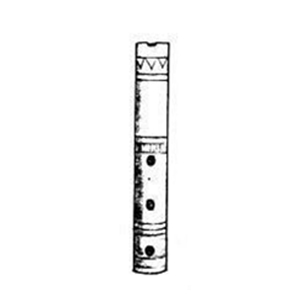The material and structure of the flute
The flute is a chirping musical instrument of the Lisu nationality. Also known as Jue, Die Tu, Di Oma, Oli Oma, Dati Tulai. The tube body is made of bamboo, which is similar to the columns of the Lahu people.

It is often made of multi-segmented golden bamboo tubes, thick at the top and thin at the bottom, leaving a knot at the end, and the rest of the bamboo knots are transparent. The length of the tube is 13 cm, the outer diameter of the upper nozzle is 1.5 cm, and the inner diameter is 0.9 cm. A "U"-shaped mouthpiece is opened on the front edge of the tube head, with a mouth width of 0.5 cm and a mouth depth of 0.4 cm. The lower edge of the mouthpiece is very thin to make the pronunciation sensitive. There are three circular sound-pressing holes on the front of the pipe body, the first hole is opened near the end of the pipe, the third hole is opened at 1/2 of the length of the pipe, and the second hole is opened between the first and third holes.
There is also a four-hole flute rotten, and a back hole is usually opened on the back of the third hole. There are also made using slender bamboo tubes.
 渝公网安备 50010702504639号
渝公网安备 50010702504639号